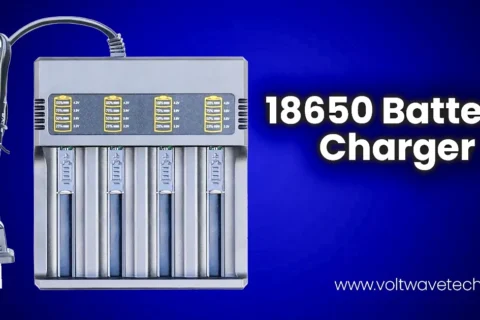Why is there an On/Off switch on solar lights
Why is there an On/Off switch on solar lights.
The environmental and cost-saving benefits of solar-powered lights are well-known. Yet, there’s often confusion surrounding one simple feature you’ll find on most solar lights – the on/off switch. For many, it seems counterintuitive why have a manual switch on a device designed to harness pure energy from the sun? The answer, it turns out, goes beyond mere operational control. This post dives into the reasons behind the ubiquitous switch on solar lights, unseen benefits, and how to make the most of this ‘little-known’ feature.

Solar Science Behind the Switch
How to Charge Solar Lights with On/Off Switch
In today’s environmentally conscious world, it’s crucial to harness renewable energy sources like solar power, especially considering the widespread availability of solar lights as a sustainable lighting option. Understanding how to effectively charge solar lights equipped with an on/off switch is key to maximizing their performance and lifespan. This involves placing the lights in sunny spots to soak up as much sunlight as possible, regularly cleaning and maintaining them to prevent any hindrances to charging, sticking to recommended charging times, and making use of the on/off switch to save energy when lighting isn’t needed. By following these simple yet essential steps, they can ensure their solar lights shine brightly for longer, contributing to a cleaner, greener planet.
Solar Battery Management
Solar lights are outfitted with photovoltaic panels that transform sunlight into electrical energy, which is then stored in an internal battery. The on/off switch is essential for managing this battery. It allows users to control when the light is actively charging during daylight hours, maximizing the battery’s lifespan.
Optimizing Charging Cycles
Just like the batteries in your electronics, the battery in a solar light has a limited number of charge cycles. By turning the light off during charging, you can ensure that it doesn’t overcharge. Overcharging can reduce the battery’s capacity and life expectancy. Conversely, switching the light off during extended periods of disuse can prevent deep discharges, which can also harm the battery.
Functional Reasons for the On/Off Switch
Safety and Convenience
On/off switch also serves practical purposes, like allowing users to shut off the light manually during repairs or maintenance. Additionally, it’s handy for homes with children or pets that may accidentally activate the light.
Light Pollution Control
Solar lights can be bright and powerful, especially when used in large numbers. Having an on/off switch gives users control
Extended Real Time
On/off switch contributes to longer run times. If fully charged but not in use, some lights may ‘drain’ slightly every night due to inherent battery leakage. The switch helps prevent this, ensuring that when you do need light, it’s ready to shine for a full night.
Testing and Transport
Manufacturers also include the switch to facilitate proper testing of the product before shipment and to maintain charge when in storage. It’s a practical feature that streamlines quality control and customer satisfaction.

Making the Switch Work for You
Get to Know Your Solar Light
Not all solar lights are created equal. Some may feature more advanced charging cycle optimization built into their circuitry, while others may be quite basic. Get acquainted with the specific capabilities of your solar lights
Daily Habits for a Brighter Tomorrow
Integrating the on/off switch into your daily routine can significantly enhance the performance of your solar lights. Switch them off during the day when not needed and on again after dusk for a full night’s illumination. It’s a small change that has a notable impact.
Maintenance Made Easy
Regularly checking and cleaning the solar panel, adjacent LED surface, and battery connections is part of responsible solar light ownership. An easily accessible on/off switch makes this maintenance process simpler and safer. Remember to turn the light off before cleaning and only switch it back on when everything is dry.
Switched-On Future of Solar Power
Technological Innovations
The humble on/off switch is just the beginning. The future is bright with advanced features like Bluetooth connectivity for smart controls, motion sensors for adaptive lighting, and efficient LED arrays that work in concert with improved solar panels and batteries.
The presence of this basic feature on solar lights hints at the larger role consumer awareness and control play in the development of sustainable technologies. Manufacturers are listening, and their products reflect the need for both innovation and practicality.
Environmental Impact
The switch signifies more than a simple command; it represents our ability to moderate our energy use and be active participants in solar power’s revolution. Every time we employ the on/off switch, we’re making a conscious choice in favor of sustainable living, reducing our impact on the environment, and contributing to a brighter, cleaner future. So, go ahead – make the switch! Keep it on for a brighter tomorrow. And when you don’t need light, let the sun do its job and switch off your solar lights. It’s a minor gesture that can yield significant consequences. Together, we can all play a part in harnessing the power of the sun and creating a more sustainable world. Let
Conclusion About Why is there an On/Off switch on solar lights
The on/off switch on solar lights may seem like an afterthought, but it’s actually an integral part of the solar power ecosystem. It empowers users to maximize the efficiency and longevity of their lights and signifies a shift in how we interact with our energy sources. By understanding and utilizing the switch effectively, you not only brighten your space with renewable energy but also enhance the overall performance of your solar lighting investment. A small switch has significant implications. It deserves attention now.
The environmental and cost-saving benefits of solar-powered lights are well-known. Yet, there’s often confusion surrounding one simple feature you’ll find on most solar lights – the on/off switch. For many, it seems counterintuitive why have a manual switch on a device designed to harness pure energy from the sun? The answer, it turns out, goes beyond mere operational control. This post dives into the reasons behind the ubiquitous switch on solar lights, unseen benefits, and how to make the most of this ‘little-known’ feature.
Not all solar lights are created equal. Some may feature more advanced charging cycle optimization built into their circuitry, while others may be quite basic. Get acquainted with the specific capabilities of your solar lights










